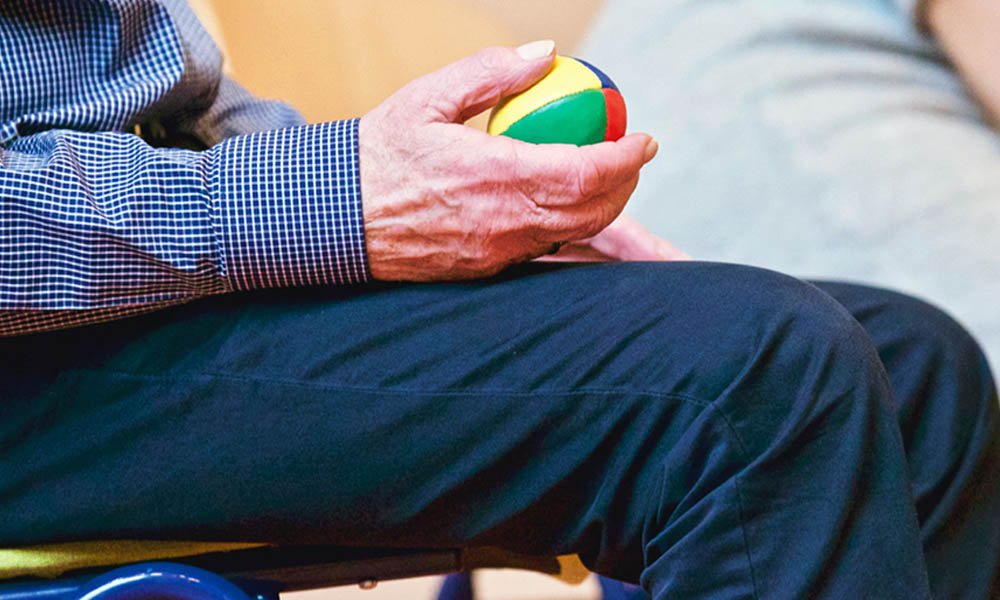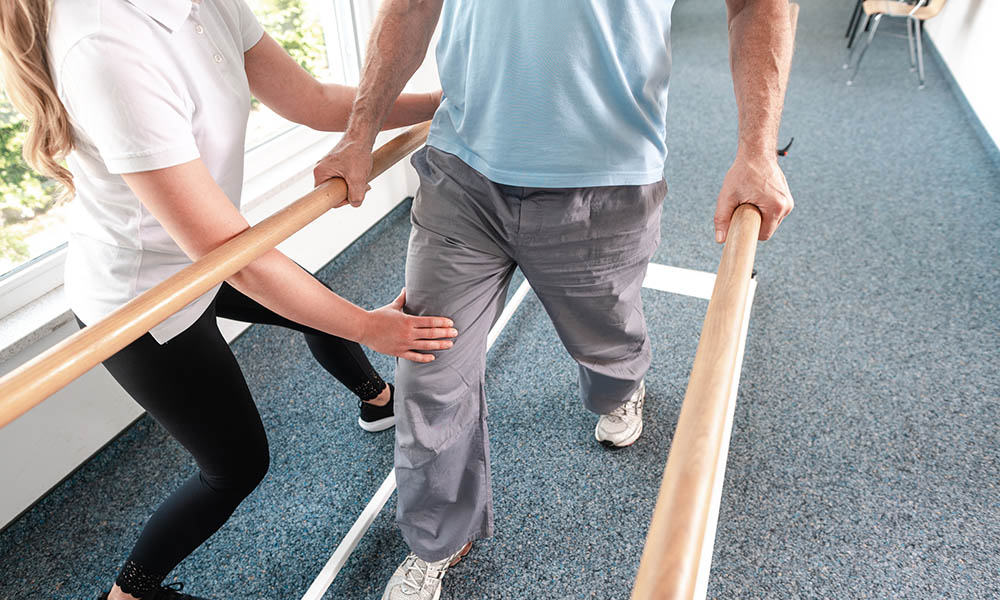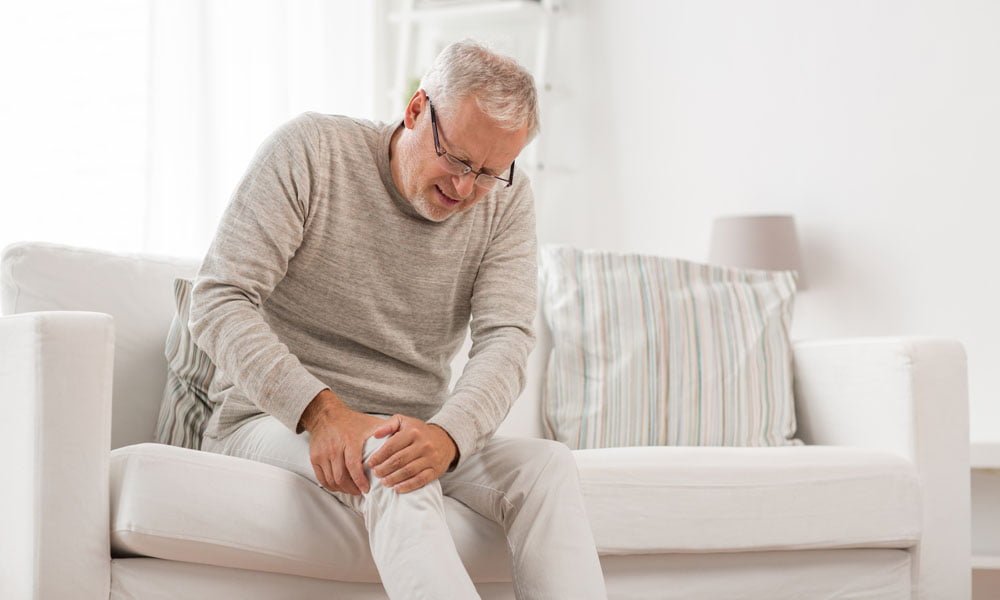Leg swelling is a common issue for the elderly.
Milder cases will cause discomfort, and more severe cases may be symptoms of a different underlying condition.
Read on to find out what causes swollen ankles and what you can do to treat them.
What Do Swollen Legs in the Elderly Mean?
Swollen feet and legs are a sign of peripheral edema. This condition is caused by fluid retention and can occur in different body parts but is most common in the legs.
If you’ve recently had lymph node surgery, this swelling could signify that your body’s lymph system is damaged around your legs.
Because of this damage, your body can no longer circulate excess fluid properly. A damaged lymphatic system will also result in swollen area scarring due to inflammation.
What Causes Lower Leg Swelling in the Elderly?

One common cause of ankle swelling could be Chronic Venous Insufficiency or CVI.
Venous insufficiency will crop up when the blood vessels in the leg cannot bring blood back to the heart.
Because the blood cannot flow up, it will remain in the legs instead.
This issue will manifest in veins closer to the skin as varicose veins. In severe cases, skin ulcers will develop.
Another cause of swollen legs is cellulitis, which will accompany skin infections.
When Should I Worry About Leg Swelling?
Swollen ankles and legs will often be accompanied by pain. Schedule a doctor’s appointment if this painful swelling comes with other symptoms like:
- Chest pains
- Breathing difficulties
You should also see a doctor if the swelling occurs after physical injuries or accidents.
What Does It Mean When Only One Leg Is Swollen?

If only one leg is swollen, then it may not be edema. Instead, your loved one’s anterior cruciate ligament or ACL may be torn.
Treatment here will require plenty of bed rest and compression therapy.
Older adults with rheumatoid arthritis may also experience single-leg swelling.
This arthritis can lead to blood clots forming in the leg, eventually leading to deep vein thrombosis.
Swollen Legs and Elderly Heart Failure
A healthy cardiovascular system will require every section of the heart to work correctly. However, elderly adults may experience congestive heart failure.
This condition will result in your heart being unable to pump blood efficiently. To reduce your risk of edema, help your capillaries function properly.
A change in diet will put you on the right track. Add more blueberries and bell peppers to your diet for their antioxidant properties.
Elderly Edema
The edema symptoms to watch out for are:
- Painful and stiff joints
- Swollen, stretched out or discolored skin
- Unexplained weight gain due to fluid buildup
- Dimples that appear after pressing down on skin (This is called pitting edema)
Generalized edema refers to a buildup of excess fluid that can occur all over the body. Lower extremity edema is more common, but it may also occur in the eyes and lungs.
Corneal edema in the eyes may cause blurry vision, and pulmonary edema in the lungs will result in trouble breathing.
Is Edema in the Legs Life Threatening?
Edema by itself is uncomfortable but not life-threatening. The issue will be the underlying cause of the swelling.
If your leg swelling is caused by cellulitis, it may move into the bloodstream and become very dangerous. Expect your doctor to prescribe antibiotics to help with your condition.
If a blood clot is causing your edema, then your doctor may prescribe blood thinners for treatment. Severe cases will require surgery to remove the clot.
Swollen Legs Elderly Treatment

If you spot an elderly leg swollen, here are some treatment methods you can try at home or on your doctor’s recommendation.
Gravity
One of the quickest methods to reduce swelling is to elevate the affected limb above your chest. Gravity will cause the fluid to move down towards your heart.
Compression Clothing
Pick up a set of compression stockings and wear them on the affected leg. These stockings will help move blood from your legs back to the heart.
Preventing Leg Swelling in the Elderly
Take these measures to prevent this swelling from occurring:
1. Hold the Salt
Excessive salt intake without enough water to balance it out will lead to high blood pressure and weaken your cardiovascular system. That’s because your body retains more water to filter the salt properly.
That extra water puts more pressure on your blood vessels. Help your body retain less fluid by using less salt in your diet.
Too much salt may also lead to kidney disease, so this method keeps your kidneys in good shape.
2. Improve Liver Health
Cirrhosis of the liver will slow down blood circulation in the leg veins, causing a fluid buildup in the legs.
If your loved one is at risk of developing liver disease, take steps like cutting down on alcohol to keep them healthy.
3. Keep Fluid Intake Consistent
Regulate your loved one’s fluid intake. Since edema is essentially fluid buildup, consuming less fluid will reduce their symptoms.
However, don’t forget to stay hydrated! Ask your loved one’s doctor how much fluid they can consume daily, and help them stick to this daily limit.
4. Move Around More
A sedentary lifestyle may lead to edema. An older adult who spends too much time sitting at a desk is at risk of developing edema.
Senior citizens can counter this risk by regularly stretching their legs and calf muscles. More movement will result in the body pumping blood away from the legs.
Conclusion
Leg edema is common in elderly individuals and isn’t a health risk. However, it can be a symptom of more serious underlying health conditions.
Edema left untreated may lead to more serious conditions requiring medical attention.
Before it gets to that point, keep your senior loved ones in good shape with regular exercise and a healthy diet!



